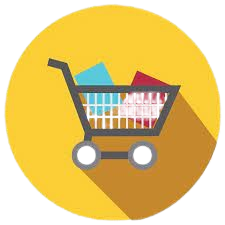C2B
Overview- C2B is a business model where individual consumers offer products, services, or information to businesses. Unlike traditional models where businesses sell to consumers (B2C) or between businesses (B2B), C2B reverses the flow of value creation.
KEY COMPONENTS OF C2B ECOMMERCE
Consumer Initiation: In C2B, consumers initiate the transaction or interaction with businesses. They offer products, services, or information that businesses can purchase or utilize. This contrasts with B2C, where businesses typically initiate transactions by offering products or services to consumers.
Digital Platforms or Marketplaces: C2B transactions often take place through digital platforms or marketplaces. These platforms facilitate direct interaction between individual consumers and businesses without the need for intermediaries. Examples include freelance platforms (Upwork, Freelancer), product marketplaces (Etsy, eBay), and service marketplaces (TaskRabbit, Thumbtack).
Consumer Offerings: Consumers in C2B models can offer a variety of products, services, or expertise. This may include freelance services (e.g., graphic design, web development), handmade crafts, digital content (e.g., photography, writing), consulting services, and more. The range of offerings can be diverse and cater to different business needs.
Direct Engagement: C2B facilitates direct engagement between consumers and businesses, fostering bidirectional communication and transactions. Businesses can browse consumer offerings, negotiate terms directly, and make purchases based on their specific requirements.
Competitive Pricing: Due to the nature of C2B interactions, pricing can be competitive. Consumers often compete with each other to offer their products or services at attractive rates, which can benefit businesses seeking cost-effective solutions.
Consumer Influence: Consumers in C2B models have a significant influence on business decisions and strategies. Their feedback, preferences, and creative contributions can shape product development, marketing strategies, and overall business operations.
Feedback Mechanisms: C2B platforms typically include feedback mechanisms where businesses can review consumer profiles, ratings, and past work. This helps businesses assess the quality of consumer offerings and make informed decisions.
Flexibility and Scalability: C2B models offer flexibility and scalability for businesses. They can easily scale their operations by engaging multiple consumers for different projects or tasks, adjusting resources as needed without long-term commitments.
Innovation and Creativity: C2B encourages innovation and creativity by tapping into the diverse skills and ideas of individual consumers. Businesses can access unique solutions, designs, and perspectives that may not be readily available through traditional suppliers or internal resources.
Risk Management: Engaging with individual consumers in a C2B model can mitigate risks associated with large-scale investments or fixed commitments. Businesses can test ideas, pilot projects, or explore new markets with reduced financial risk.
BENIFIT
- Global Reach: Businesses can access a global pool of individual consumers with diverse skills and expertise. This allows them to find specialized talent that may not be available locally or through traditional hiring methods.
- Cost-Effectiveness: Engaging with individual consumers can be more cost-effective than hiring full-time employees or outsourcing to agencies. Businesses can often negotiate competitive rates directly with consumers offering their services.
- nitiation of Transactions: Consumers have the autonomy to initiate transactions and offer their products or services directly to businesses. This empowers them to control their business engagements and pricing strategies.
- Monetization of Skills: Consumers can monetize their skills, expertise, or creative talents through C2B platforms, creating additional income streams.
- Fresh Perspectives: Consumers bring unique ideas and perspectives to businesses, fostering innovation. They may offer creative solutions or approaches that businesses might not have considered internally.
- Adaptability: Businesses can quickly adapt to changing market needs and trends by tapping into the creativity and agility of individual consumers.
- Skill Enhancement: Continuous engagement with businesses allows consumers to develop and refine their skills, adapting to market demands and industry trends.
- Networking Opportunities: C2B interactions enable consumers to build professional networks and collaborations with businesses, opening doors to future opportunities and career advancement.
C2B models redefine the traditional business-consumer relationship by empowering consumers to play an active role as suppliers of products, services, and expertise. This mutually beneficial arrangement fosters innovation, flexibility, and efficiency in the marketplace, contributing to the dynamic evolution of digital commerce and entrepreneurship.
